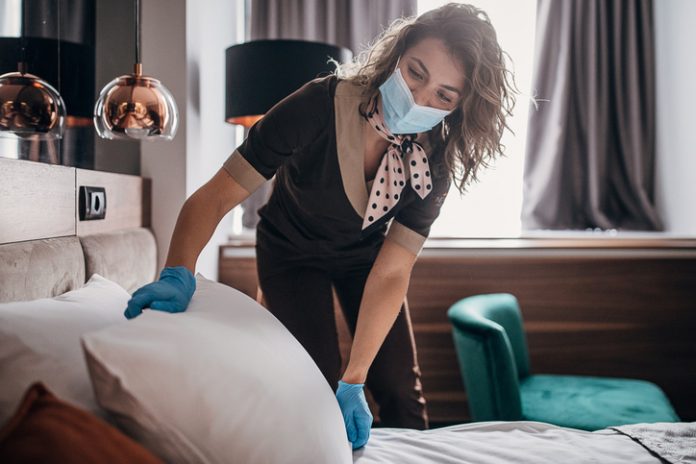
Hotels struggled to remain profitable in 2020, and breaking even was considered positive. In order to stay in business, many hotels cut services where they could. One service that was lessened was daily housekeeping, which is still suspended at some hotels. Housekeeping has become an on-request deliverable, not typically offered until multiple days after checking in, according to HotStats.
Hilton was one of the first to come out with a formal stance on housekeeping, HotStats reports, but most brands followed, either stating so in the public domain or informing customers when they checked in. The measure was a strategy to limit guests and staff against exposure to COVID-19, but it, too, was deemed a money saver, limiting housekeeper hours.
HotStats notes that the move to on-request housekeeping is one operational element that can cause a cascade of services and amenities unbundling and turning to a cost-related amenity when these services were complimentary pre-pandemic. HotStats researched if the shift has a real impact on hotels’ bottom lines and found that the issue is rather complex.
Beyond the Numbers
“There has certainly been a benefit” in the reduction in stay-over cleanings, says Michael Doyle, managing director and executive vice president at asset manager CHMWarnick to HotStats. “When we look at housekeeping hours and equate them to a productivity metric, the overall savings is 14 percent. However, while there’s a short-term benefit of productivity, the long-term impact isn’t there because we’ve had to increase wages to attract personnel for housekeeping and other functions. Those higher wages will offset the savings.”
Doyle continues, “Industry analyses we’ve seen indicate that housekeeping changes could lead to a 100- to 200-basis-point savings and that would impact the performance of hotels. However, the labor shortage and extra training housekeepers need now after not cleaning rooms for all of this time is preventing the productivity rate from being higher.”
There’s also the issue of guest tolerance as guests other than those from the leisure sector return, like business travelers, Doyle notes. “While many leisure travelers are astute, they have a different level of tolerance than corporate guests, who want everything back to where it was pre-pandemic.”
HotStats notes that Jordan Bell, vice president of hotel operations and management consulting at advisory firm hotelAVE, is also seeing productivity improve due to the change, but said other factors could be at play. According to Bell, a sample of seven properties achieved a 10.1 percent productivity improvement in all positions of the rooms division, in Q1 2021 versus Q1 2019.
However, Bell says, “We’re hearing of significant cross-utilization due to labor shortages over the past year, where salaried managers and employees from other areas of the hotel are pitching in to clean rooms on busy days. This has the effect of artificially boosting rooms productivity while reported managerial labor stays relatively flat and productivity in other areas is potentially adversely affected.”
Data
Housekeeping labor on a per-available-room basis remains down globally, but it is slowly showing some signs of a resurgence as demand returns, HotStats reports. As the HotStats data show, there is a labor shortage, and though many hotels are doing away with daily cleanings, some brands are still offering full cleanings by request.
Consistency
HotStats reports that whether the end of stay-over cleans remains in place or not, brands need to stay consistent in what they do, says Bell. “From a brand perspective, there needs to be consistency, and while some markets may support having housekeeping by request only, or not at all, others markets won’t. There was a gradual evolution from changing the linen every night to green programs with occasional changing, and I honestly wonder, will stay-over service go that route?”
Bell adds, “It’s likely going to take one brand to take the step and then others will figure out how to move around that. It’s not clear that it’s a keep or cut decision; there are a number of permutations involving the scope, frequency, additional fees, etc., that could take shape and give each brand a little room to execute the best fit for their guests.”











